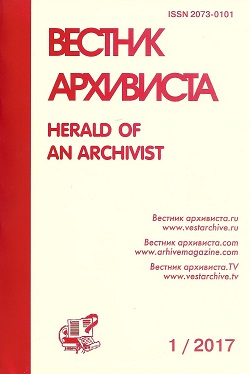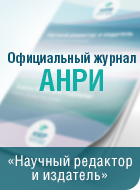"The Memory" Collection of Letters to the Front from the Russian State Archive of Social and Political History as the Largest Collection of Red Army Soldiers Private Correspondence (1941–1945)



| 04 April 2024
Posted in
Anniversaries
Tazhidinova I.G., Krasnodar, Russian Federation
"The Memory" Collection of Letters to the Front from the Russian State Archive of Social and Political History as the Largest Collection of Red Army Soldiers Private Correspondence (1941–1945)
Abstract
The article assesses one of the largest collections of Red Army soldiers’ private correspondence (1941–1945). Almost 70 years after the Great Patriotic War a valuable historical source, the private correspondence of soldiers, remains virtually unstudied and regretfully little used in research. Turning to the subject is long overdue since the development of such research areas as social history, microhistory, military and historical anthropology, gender history is virtually impossible without sources of personal provenance. Among them an important place belongs to epistolary documents, which help reconstruct the history of everyday life, personal relationships of the Soviet people during the war. Accordingly it’s a task of scientific significance to ascertain what complex of wartime letters is kept in the Archival Fond of the Russian Federation, to assess the representativeness of some of the letters collections and their information potential. One of them is the collection of the "Memory" expedition for collecting letters from the front, which was created in 1980 and greatly enlarged since. It now numbers about 1,500 files. This collection is preserved in the fond M-33 of the Russian State Archive of Social and Political History. Being a considerable array soldiers’ letters addressed to relatives, friends, lovers, and pen friends, it merits the researchers’ attention. It stands to mention that there are some return letters in the collection, though not many. Packages of letters of the same author contain up to tens or even hundreds of messages; the number of letters is largest in case of correspondence between soldiers and their wives. Of greatest interest are more or less complete packages containing correspondence over a long period of time. Also insightful are sets of a person’s letters to different addressees. But even single letters have great potential for clarifying certain aspects of psychology and mentality of a person in the wartime or certain facts of everyday life in the lines and in hinterland. The ability to convey the details of living in the lines and profundity of feeling differ from the author to author, and yet even shortest and most meager letters convey some useful to historian information. The task is to kindle scientific interest in researching wartime correspondence. There are sources to meet new challenges, and many of those are concentrated in the fond M-33 of the Russian State Archive of Social and Political History.

Keywords
The Archival Fond of the Russian Federation, the Great Patriotic War 1941-1945, the Russian State Archive of Socio-Political History (RGASPI), private correspondence, the Red Army soldiers, family, everyday life of the front and the home front.
Download the article: pdf
About the authors
Tazhidinova Irina Gennadyevna, PhD in history, associate professor of The Kuban State University, Krasnodar, Russian Federation, 8-962-860-77-77, This e-mail address is being protected from spambots. You need JavaScript enabled to view it











